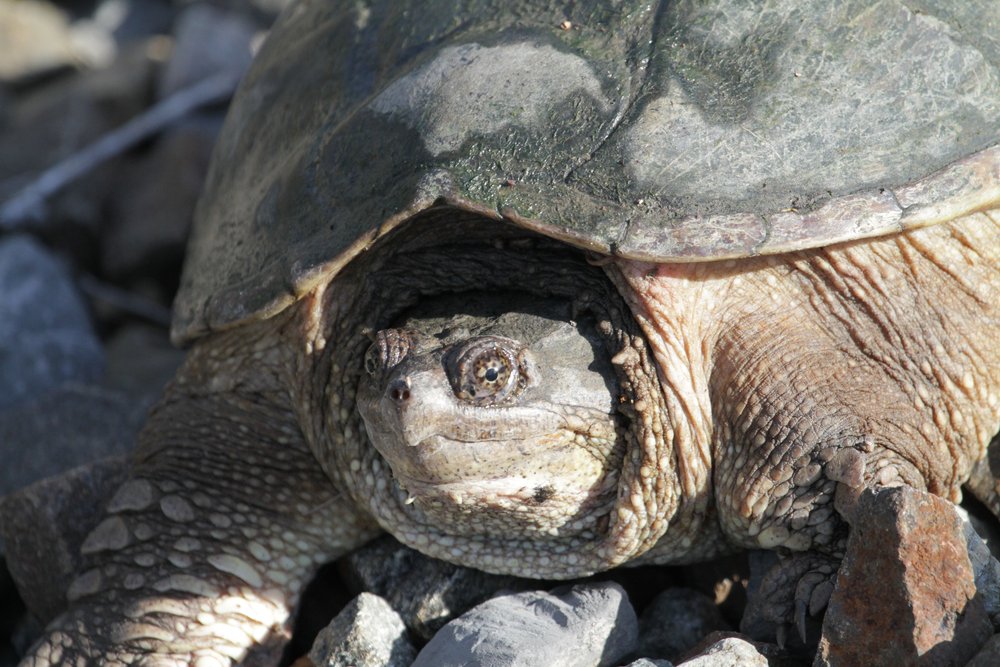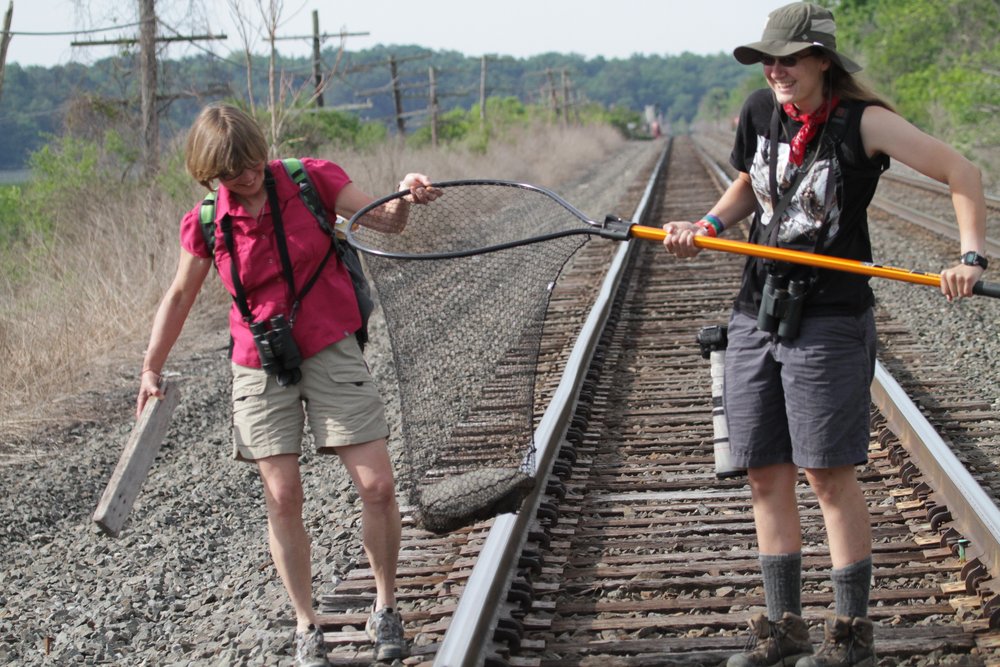Snapping Turtle Tradition

I prepared for snapping turtle week by buying a fishing net. As I left Gander Mountain someone called to me: “butterflies?”—those would be some butterflies!
“Nope, Snapping turtles,” I called back, cheerful.
He rolled his eyes.

I prepared for snapping turtle week by buying a fishing net. As I left Gander Mountain someone called to me: “butterflies?”—those would be some butterflies!
“Nope, Snapping turtles,” I called back, cheerful.
He rolled his eyes.
 my finest rescue techniqueBecause snappers travel to lay their eggs, they cross roads and railroad tracks—and often are crushed. Already I had clumsily shoved a turtle across a road, the turtle snapping, four or five of us offering suggestions, stopping or slowing cars, and from time to time screaming in surprise when the turtle lunged with a snap. The net was the solution to all of my turtle rescuing problems.
my finest rescue techniqueBecause snappers travel to lay their eggs, they cross roads and railroad tracks—and often are crushed. Already I had clumsily shoved a turtle across a road, the turtle snapping, four or five of us offering suggestions, stopping or slowing cars, and from time to time screaming in surprise when the turtle lunged with a snap. The net was the solution to all of my turtle rescuing problems.
Last year, I stumbled on the maternity ward of snappers along the train tracks that slice the North Tivoli Bay from the main artery of the Hudson River. There, in the black gravel laid as foundation for the tracks the snapping turtles can easily dig, then the sun warms the eggs beautifully. On June 6 of last year, I saw dozens of turtles digging, and rescued one caught between the rails. The next day, dozens of turtles lay crushed, mangled by the trains barreling north and south. This year, I was going to save as many turtles as possible.


Further up the track it was a regular egg laying fest. Over twenty nests had been dug and raided—no doubt by raccoons. Shreds of the eggs littered the disturbed holes, the white so white against the black soil. But over a dozen lady snappers were still in holes, quietly laying their round, white eggs. Three had gathered near to each other, hind ends burrowed deep in the soil. When we returned half an hour later, one was gone—and her nest already empty. How quickly the thief works!
And yet--though the raccoon was hard at work, we saw no turtles crushed by the steel wheels of the train. This, a small relief.
We stopped for tea and sticky buns brought by Kate from the Tivoli Bakery—for any tradition to be a success, good food is essential—and watched barn swallows wing in and out under the underpass.

Does saving two snapping turtles make a difference? Maybe, but maybe not. It is comforting but naïve to think that every little bit helps—because in the face of our environmental problems this doesn’t even register. What matters, though, is that saving these turtles is what I can do, it’s what I do. It’s one of my traditions.
Snapping Turtle Rescue



But Christina and I—searching for early morning birds—had no net with us there by the train tracks.
Christina suggested picking it up by its tail. That is the most frequent method of snapper removal, “but hold it away from your legs,” one friend warned.
“I’ve heard that isn’t good for the turtle,” I offered, while also worrying that the long neck of the turtle would swing around and snap her.
“Getting killed isn’t much better,” she pointed out, too wise for a 21-year-old.
“I’ve heard you can get them to latch onto a stick and move them that way.” We offered a stick to the turtle who seemed dumbstruck with our idea. She didn’t snap.
We then did what all turtle rescuers do: we stared at the turtle. We took photographs.
“Isn’t it great to photograph something that isn’t moving?” Christina joked. We spend a lot of time together trying to find birds, then snap fleeting photos. This was a treat. We were able to analyze the turtle’s steady yellow eyes that held a bit of contempt for the world and for us in particular. There were little barbells on her chin, like fangs, and all of her skin was droopy. The claws on the front feet impressed me. Unlike other turtles that shrink into their shells when frightened, the snapper can’t retract its enormous head and legs. It remains vulnerable to the world. Or, thought of another way, ready to attack the world.

We both found flat boards. From one side, Christina pried under the turtle and I did the same on the other side. Balancing, we lifted in unison while the turtle let off a musky pee. We stepped the turtle down the gravel embankment and into the shrubs lining the North Tivoli Bay. For the moment, the turtle was safe.